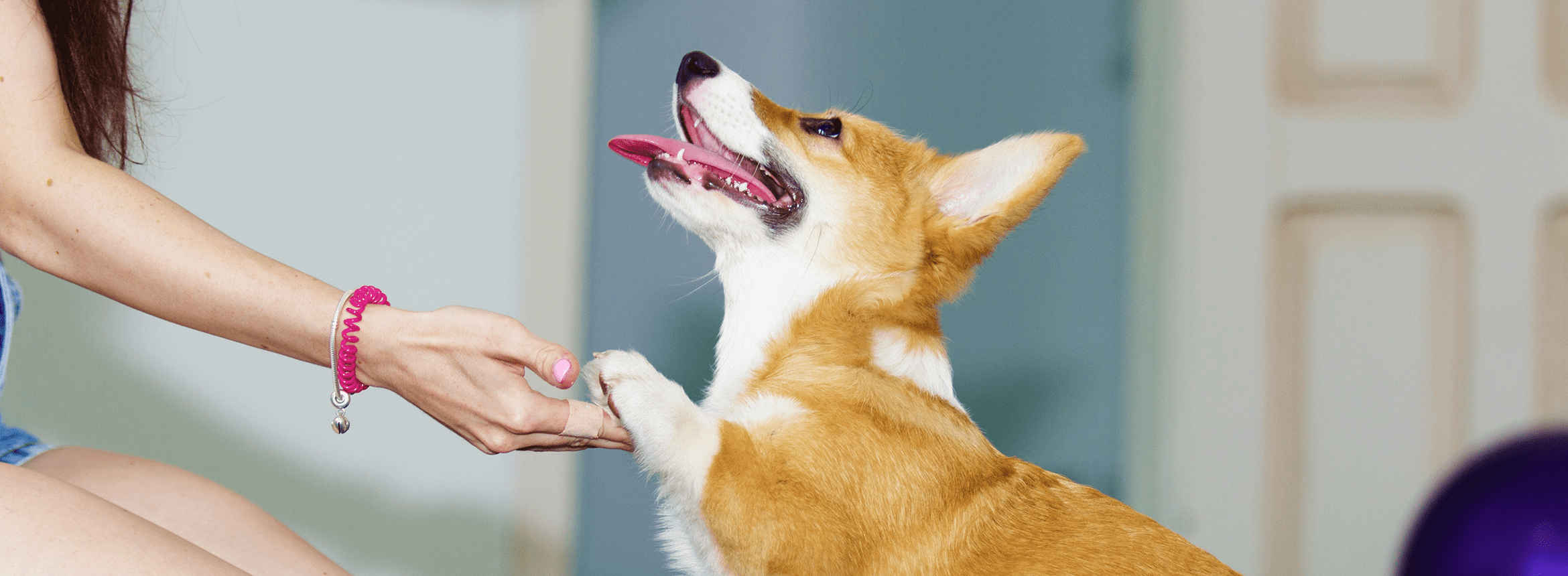Congratulations on your new puppy! We’ve partnered with Eric Wiese, Animal Behavior Specialist, Veterinary Behavior Consultant, and host of the CBS series, “Lucky Dog,” to help you form a great training foundation for you and your pup!
Your furry, four-legged friend isn’t just a pet, but a new member of your family. And this new bundle of belly-rubs and joy isn’t just new to you, but new to their whole world and looking to you for guidance, comfort, and reassurance. (No pressure!)
Not to worry though; here are a few training tips that you can start right away to put your puppy on the path to a happy and healthy life.
Hello World!
Puppies up to 4 months old are in a critical development period known as “imprinting” where they are at their most impressionable. Their response to external stimuli will establish their behavior and temperament, and the quality and quantity of their experiences during this time will have a huge impact on their personality. That’s why it’s crucial for you to immediately establish a safe environment for your puppy in your home, and to provide a safe and comfortable context to everything that they might see and hear for the first time outside.*
Inside Your Home
A crate should be your puppy’s happy place – their go-to sanctuary. In a world full of new unknowns, they know this is their safe space. The crate should be big enough for your puppy to be able to stand up, turn around, and lie down comfortably but not so big that they can go potty in one corner and sleep in another.
One tool to help with crate training is a puppy pen that you can put around the crate. This allows you to keep the crate door open and still let your puppy explore their surroundings. If you have to mentally or physically take a breather, this area is perfect for your puppy to ensure they don’t harm themselves or your environment.
Outside Your Home
Everything outside – car horns, truck noises, skateboards, other people – has the potential to be traumatic to a puppy. And any scary experience that a puppy has at this time, whether it’s actually dangerous or not, can have a lasting effect on them and their behavior, so it is incredibly important to get them outside and provide the context that those “scary” things aren’t anything to worry about.
Just because your puppy doesn’t have all of their vaccinations yet doesn’t mean you can’t start their outdoor socialization, you can! Avoid putting them on the ground and letting them sniff around or interacting with other dogs, unless they’re in a puppy socialization class in a controlled environment. Instead, hold them in your arms or push them in a doggie stroller and be super attuned to their behavior. We call this “cornerwork” and it is literally picking your precious pooch up and carrying them to the corner of your street (or putting them in the car and going to a busy corner somewhere) and getting them comfortably acclimated to the outside environment. You want to counter-condition potentially scary things like loud cars or skateboards with, you guessed it, copious amounts of treats to turn these into super-positive experiences.
So remember: Set up a safe space in your home, go outside with your puppy to help them get used to the outside world without trauma, take them to the vet to get all of their vaccinations, and start having the best time with your new best friend!
And consider hiring a professional, certified trainer or animal behaviorist to help you through your puppy’s development. Be sure to watch “Lucky Dog” Saturday mornings on CBS – check your local listings.
*DISCLAIMER: Always consult your veterinarian on your puppy’s vaccination schedule to make sure they are healthy enough to be set down outside.






